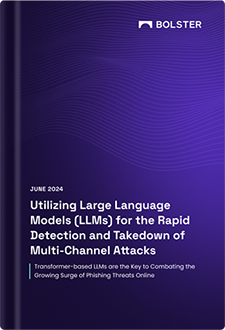Threat intelligence analyzes and understands potential threats to an organization’s systems, data, and networks. This analysis helps organizations identify and respond to threats before they can cause significant damage.
Organizations use this technology to better understand the current threat landscape and identify potential risks and vulnerabilities that could impact their security posture. Once a threat is identified, cyber risk and IT teams can respond and remediate, and better understand how their current systems are responding to the current threat landscape.
This blog will cover everything you need to know about threat intelligence, including types, benefits, challenges, and best practices.
What are the Different Types of Threat Intelligence?
- Strategic Threat Intelligence: This involves collecting and analyzing data about potential threats to an organization’s critical assets. Strategic threat intelligence is typically focused on the long-term view of threats and is used to develop policies, procedures, and strategies to mitigate those threats.
- Operational Threat Intelligence: This type involves collecting and analyzing data about ongoing threats to an organization’s systems and networks. Operational threat intelligence is typically focused on the short-term view of threats. It provides real-time threat information to security personnel, allowing them to respond quickly and effectively to threats.
- Tactical Threat Intelligence: This type involves collecting and analyzing data about specific threats to an organization’s data and intel. Tactical threat intelligence is typically focused on providing specific details about a particular threat, such as the tactics, techniques, and procedures (TTPs) used by attackers.
What are Some Examples of Threat intelligence?
Threat intelligence is an important tool to have in your cyber defense strategy because of the amount of information it can add to your decision-making and efficiency. A good example would be identifying a potential new malware variant being used in a targeted attack campaign, which can then help your team adjust resources or be more aware of malware indicators.
Another example of effectively using it would be if a security analyst or threat intelligence team detected a new type of hacking trend targeting sensitive data living in a particular industry or sector. They could then analyze the specific detected malware and its behavior to determine its source, how it spreads, and its capabilities. Organizations can then develop defenses and counter measures to proactively protect against the threat and prevent attacks.
Threat intelligence could include information about a variety of threat types, including software or hardware vulnerabilities, cybercriminals’ tactics, and indicators of compromise (IOCs) that can help identify and prevent malicious activity on a network.
Elements of Effective Threat Intelligence
The three critical elements of effective threat intelligence are:
- Data collection: The technology begins with collecting data from various sources, such as open-source intelligence, dark web monitoring, and internal security logs. The data collected may include indicators of compromise (IOCs), network traffic data, social media posts, and other relevant information.
- Analysis: Once data is collected, it must be analyzed to identify patterns and trends indicating a potential threat. This analysis can involve data correlation, statistical analysis, and other techniques to identify potential risks and vulnerabilities.
- Dissemination: The final element of threat intelligence is dissemination, which involves sharing intelligence with relevant organizational stakeholders. This may include security teams, executive leadership, and other decision-makers who must be aware of potential threats and take appropriate action.
These three elements are closely interconnected, each depending on the other for effective, proactive defense against threats.
Weighing the Pros and Cons of Threat Intelligence
Now that we’ve highlighted what threat intelligence is, and what makes up an effective use of threat intel for cybersecurity teams, let’s look at some of the pros and cons of this technology.
The benefits are numerous, and include:
- Early threat detection: The technology helps organizations detect potential threats early, allowing them to respond before the threat can cause significant damage.
- Proactive threat mitigation: The forward-looking software allows organizations to mitigate potential threats rather than react after a breach proactively.
- Improved incident response: Threat intelligence provides security personnel with real-time information about threats, enabling them to respond quickly and effectively to incidents.
- Enhanced security posture: Better access to data enables organizations to strengthen their security posture by identifying vulnerabilities and implementing mitigation measures.
- Competitive advantage: It can provide organizations with a competitive advantage by helping them to identify and mitigate threats that their competitors may not be aware of.
While the benefits are significant, there are also several challenges that organizations may face when implementing a threat intelligence program. These challenges include:
- Data overload: Threat intelligence can generate vast data, which can be challenging to manage and analyze effectively.
- Lack of context: The technology can lack context, making it difficult for security personnel to prioritize threats and respond appropriately.
- False positives: The technology can generate false positives, leading to wasted resources and increased costs.
- Lack of standardization: No standardized framework for threat intelligence makes it difficult for organizations to compare and analyze threat data effectively.
Best Practices for Effective Use of Threat Intelligence
To overcome the challenges associated with the overwhelming data and lack of context that can come with using threat intelligence, organizations should follow these best practices:
- Define objectives: Organizations should define clear objectives for their program, including what data to collect, how to analyze it, and how to use it to improve their security posture.
- Use multiple sources: Organizations should use multiple threat intelligence sources, including internal data, open-source intelligence, and commercial threat feeds to ensure their data is backed up from multiple sources.
- Automate processes: Organizations should automate processes wherever possible, including data collection, analysis, and dissemination, to reduce the risk of human error.
- Foster collaboration: Organizations should foster collaboration between security teams, IT teams, and business stakeholders to ensure that the technology is used effectively across the organization.
What Does a Threat Intelligence Team Do?
A threat intelligence team collects, analyses, and disseminates information about potential cyber threats, and manages the vast amounts of information collected by cyber software. Their primary goal is to help an organization better understand the current threat landscape and identify potential risks and vulnerabilities that could impact its security posture.
Some of the specific tasks that a threat intelligence team might undertake include:
- Developing products: Based on their analysis, these teams create reports, alerts, and other intelligence-backed products that security teams can use to improve their defenses.
- Identifying vulnerabilities: Threat intelligence teams may identify software, hardware, or systems vulnerability trends in the gathered data that cybercriminals could exploit.
- Collaborating with other teams: These teams often work closely with other security teams, such as incident response teams, to help respond to potential threats more effectively.
- Monitoring current threat actors: Teams may track and monitor threat actors, including their tactics, techniques, and procedures, to better understand their capabilities and anticipate their next moves.
Threat Intelligence, Data Analysis, and Automation for Better Threat Detection
In conclusion, threat intelligence is critical to any organization’s security strategy. By gathering, analyzing, and disseminating information about potential cyber threats, organizations can better understand the current threat landscape and identify potential risks and vulnerabilities that could impact their security posture.
Bolster supports organization’s cyber threat identification and takedown strategy by providing expansive threat intelligence information across the entire internet. With daily, automated data scanning technology, security teams can spend less time shifting through swaths of overwhelming data, and trust Bolster will notify them when a threat is detected.
To learn more about Bolster’s threat intelligence capabilities, schedule a free demo.









